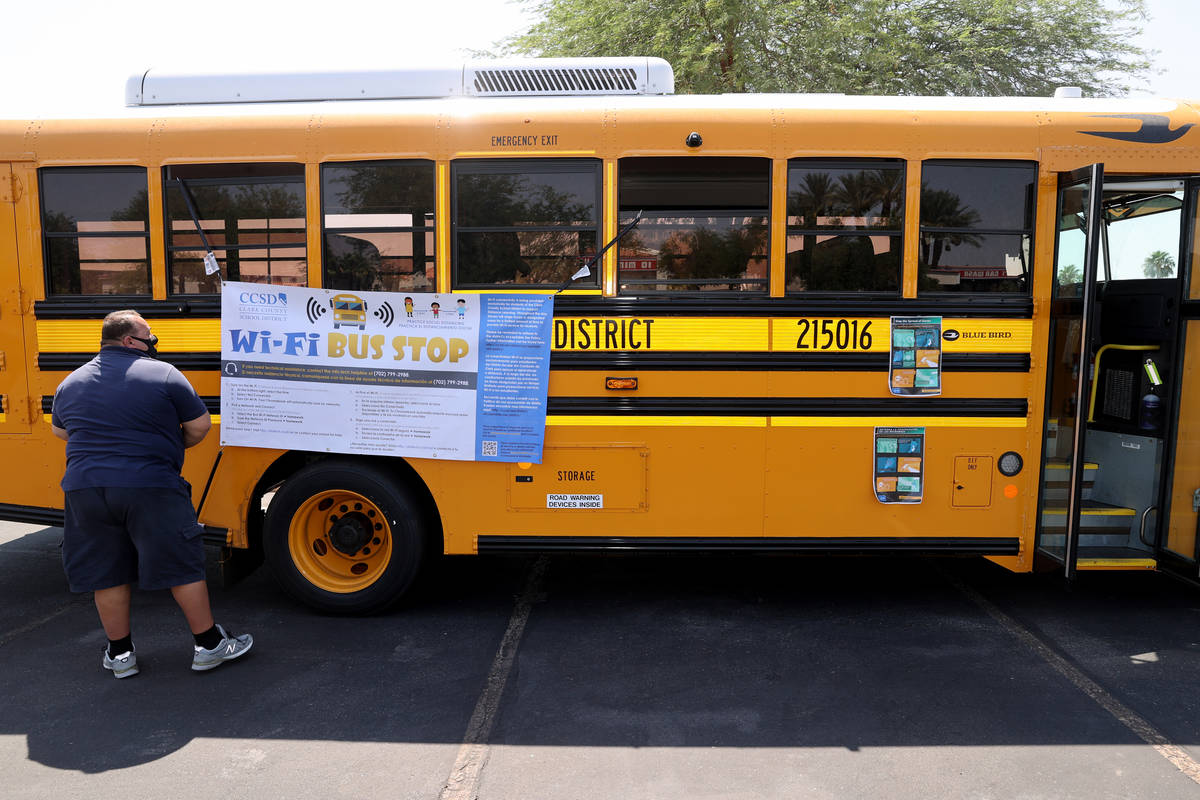Failing grades jump at CCSD during distance learning
Clark County School District students received more failing grades during the fall semester of distance learning than in previous school years, according to district data posted ahead of an expected School Board vote Thursday on the possible reopening of some campuses.
The grade data, which cut across all age groups, was a factor in a recommendation to reopen schools to small groups of students for voluntary academic and socio-emotional supports, according to an online presentation on the agenda. Other factors shaping the district’s recommendation included reports of students and staff struggling with mental health issues during school closures and high COVID-19 positivity rates in Nevada.
The data show that 90.4 percent of comprehensive schools in the district assigned more F’s and 77.2 percent assigned more D’s in the fall semester of 2020 than in 2019. That mirrors a national trend of student achievement suffering during school closures due to the COVID-19 pandemic.
The percentage of F grades at the district more than doubled, according to the presentation, representing 6 percent of all grades in fall 2019 and 13 percent of all grades for the semester in 2020.
While the percentage of A grades remained the same at 31 percent, the presentation reports that 11.2 percent of students who received an F in fall 2020 had A’s and B’s in fall 2019 — an affirmation of many families’ reports that their typically high-achieving students struggled with virtual school.
Further discussion of academic performance is expected Thursday, but Superintendent Jesus Jara briefly addressed the topic in a virtual talk Monday featuring School Board President Linda Cavazos and Rep. Susie Lee, hinting that some future flexibility on assessments might be needed from the U.S. Department of Education.
Support, not punishment
“It’s going to take us a lot longer to catch up the academic needs of our students. It’s more than Saturday school and summer school,” he said. “We need to know where our kids are when they come back and measure what they’re learning and growing, in a way to support them, not necessarily in a punitive way.”
The presentation on the agenda broke down the data by elementary, middle and high school, finding that the percentage of students with at least one F rose in elementary schools from 32 to 41 percent, in middle schools from 24 to 33 percent and in high schools from 26 to 37 percent.
Among student groups, over half of all English learner students received an F during the fall semester. Students identified as Hispanic, Black, American Indian and Pacific Islander all saw double-digit increases in the percentages of students receiving F grades this fall.
Students who qualify for free and reduce-priced lunch also saw a 7-point rise in the numbers of students receiving failing grades.
Family therapist Sheldon Jacobs of Las Vegas said that many of his clients who come from low socioeconomic backgrounds have struggled with the requirements of distance learning on top of other stressors like working to support their families.
“They make a concerted effort to get the work in, but there are other factors going on inside the home that distract them,” Jacobs said. “They may not have a parent who’s there at home, or they don’t know how to reach out for help.”
In addition to the grade data, the district’s presentation on Thursday will report some mental health data, including a finding that 18 percent of 10,000 students surveyed requested help with a socio-emotional issue.
The connection between academic performance and mental health is sometimes even more apparent in typically high-achieving students, Jacobs said.
‘Path of helplessness’
“For a lot of kids, it can lead them down this path of helplessness,” he said. “Doing well in school allowed them to feel better about themselves. It hits them harder, like something else is being taken away.”
UNLV law Professor Sylvia Lazos described the impacts on English learner and low-income students in particular as devastating, with implications for Southern Nevada for years to come.
“Research shows that when the general population falls behind a semester, we’re talking about these children in vulnerable populations falling behind a grade, or even a grade and a half,” Lazos said.
She said there’s an urgent need for not only academic interventions like summer and Saturday school, but for reopening and distance learning materials translated into languages other than English. With $477 million in federal relief dollars budgeted for Nevada schools, Lazos said CCSD should make remediation a top priority.
Jacobs said he’s optimistic that the recommendation to bring students back in small groups will help rekindle some of the all-important connections to peers and teachers that will boost both mental health and academic performance. But during distance learning, he said he also encourages parents to be mindful of any changes in their children.
“For a student who’s used to excelling in school and is no longer excelling, there might be something going on,” he said.
Contact Aleksandra Appleton at 702-383-0218 or aappleton@reviewjournal.com. Follow @aleksappleton on Twitter.






































